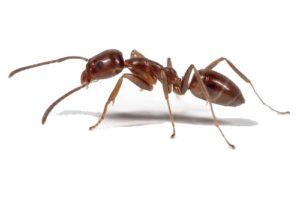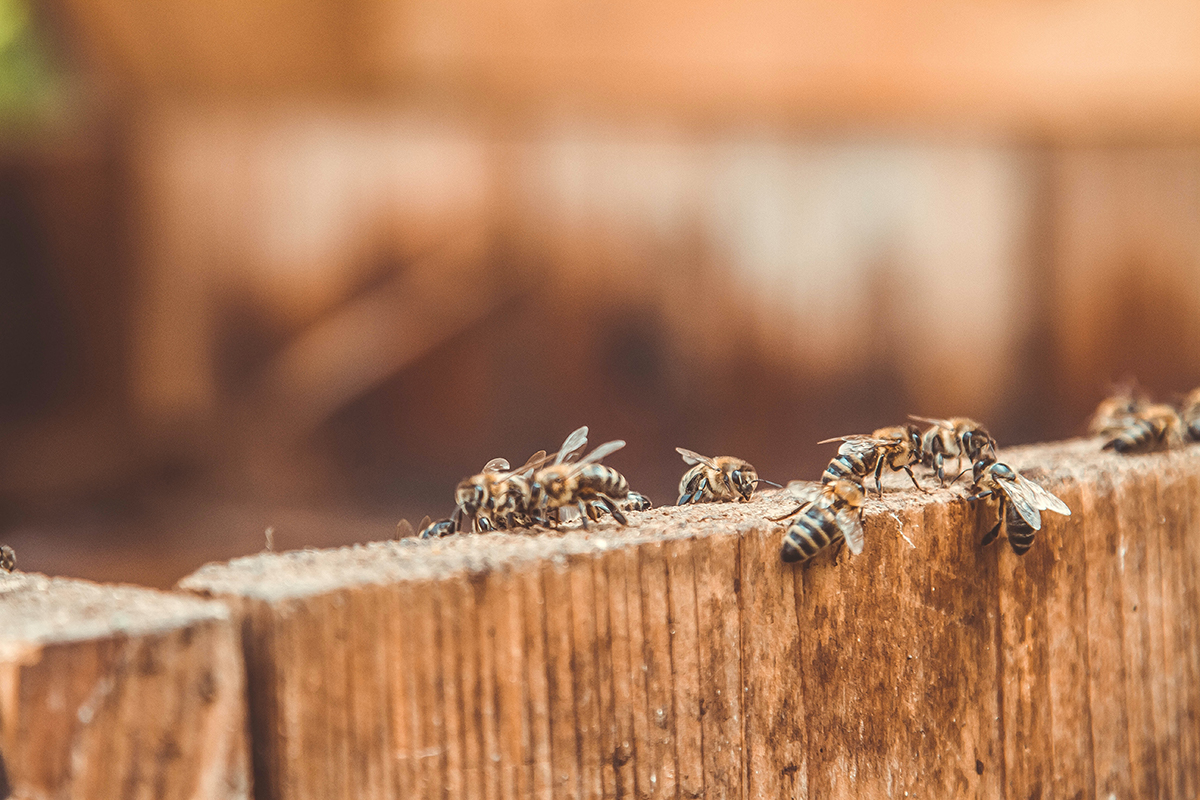Warm temperatures, long days and vacation time are all indicators of the summer season. We are not alone in our enjoyment of the season change – pests love summer too! While commercial facilities are faced with pest pressures year-round, there are a few pests that can demonstrate increased activity in the summer months. It is important to be aware of common pests during each season so you know what to look for and can accurately communicate any findings to your pest management professional.
Ants
Ants are social pests who live in colonies, meaning that a sighting of just a few usually indicates there are many more within the area. Ants can contaminate food and present a risk to a brand’s reputation with their unsightly presence. There are multiple types of ants that could be found near and inside your facility.
 Argentine ants move indoors during either very dry or very wet weather. Their nests can usually be found near a moisture source, such as water pipes or sinks. While typically considered to be a nuisance pest, these ants can transmit disease organisms by crawling over garbage, sewage and decaying animals.
Argentine ants move indoors during either very dry or very wet weather. Their nests can usually be found near a moisture source, such as water pipes or sinks. While typically considered to be a nuisance pest, these ants can transmit disease organisms by crawling over garbage, sewage and decaying animals.
Pavement ants can be found in walls, insulation and under floors. While the worker ants are not aggressive, they can bite and sting. During warm weather and following significant rain, huge numbers of winged reproductive males may emerge from their nests but can appear inside at any time throughout the year.
Odorous house ants can be found in exposed soil, but are most often under objects on soil, including equipment stored outdoors. They tend to move their nests in response to rain or changes in seasonal temperature, and they enter buildings when food supply is limited, such as during rainy weather. Inside, these ants build their nests near moisture sources, such as in wall voids, especially around water pipes, sinks and water fountains.
Carpenter ants are wood-destroying organisms and can compromise structural timbers. Their nests are usually located in decaying wood and then expand into sound wood, but can also be found in small voids. We typically see swarmers in the spring and the summer.
Pharaoh ants are believed to spread various diseases and are considered a health threat. Indoors, they are found in wall voids, behind baseboards, in furniture, under floors and between objects in warm areas near food and water sources.
Hornets and Wasps
 It’s not uncommon to watch employees and customers take part in the summer ritual of swatting away stinging insects. These pests can be seen throughout spring and summer, but it is generally not until late summer and early fall that they become a major nuisance for business owners. By that point in the year, the colonies are well-established, and the workers are preparing for overwintering by foraging for food for themselves and the queen. This heightened activity increases the risk of stinging insects for humans, as the workers are much more aggressive and can sting without much cause or warning.
It’s not uncommon to watch employees and customers take part in the summer ritual of swatting away stinging insects. These pests can be seen throughout spring and summer, but it is generally not until late summer and early fall that they become a major nuisance for business owners. By that point in the year, the colonies are well-established, and the workers are preparing for overwintering by foraging for food for themselves and the queen. This heightened activity increases the risk of stinging insects for humans, as the workers are much more aggressive and can sting without much cause or warning.
Additionally, the queens are working to produce as many eggs as they can. These eggs mature into adults, which leave the colony to mate. The new queens then create their own nests nearby to overwinter and form their own colony. They typically opt to stay near their original nest, resulting in many new nests within a particular area.
Mosquitoes and Flies
Mosquitoes are notorious for their annoying buzzing and biting at outdoor events. However, mosquitoes breed and lay their eggs in standing water, including puddles, rain gutters and more. This means mosquitoes can present an issue at commercial facilities if standing water issues are not resolved. Mosquitoes are considered a major public health threat because of their ability to transmit human diseases such as West Nile virus and Zika virus.
Despite their name, house flies can be found everywhere and not just homes. House flies are most active during the day in warm weather. House flies are not only a nuisance pest, but they may also carry many disease organisms such as typhoid fever, cholera, diarrhea, etc. Controlling house flies is of utmost importance in food-handling facilities.
Ticks
 Ticks present a great public health threat, as they transmit several disease-causing pathogens including Lyme Disease and Rocky Mountain spotted fever. Ticks locate hosts by questing, climbing up plants to wait for a potential host to brush past. Both humans and animals, including small mammals and rodents, can support the spread of ticks. Be sure to trim vegetation away from any buildings to reduce the chance of ticks hitchhiking their way into your facility. It is recommended to keep a three-foot barrier of wood chips or gravel between any mowed grass/recreation areas and any wood areas with tall grass.
Ticks present a great public health threat, as they transmit several disease-causing pathogens including Lyme Disease and Rocky Mountain spotted fever. Ticks locate hosts by questing, climbing up plants to wait for a potential host to brush past. Both humans and animals, including small mammals and rodents, can support the spread of ticks. Be sure to trim vegetation away from any buildings to reduce the chance of ticks hitchhiking their way into your facility. It is recommended to keep a three-foot barrier of wood chips or gravel between any mowed grass/recreation areas and any wood areas with tall grass.
Summer Pest Prevention
Now armed with the knowledge of which pests to look for, it is important to take action with pest prevention efforts. Here are a few tips to deter pests this summer season:
- Install insect light traps inside the facility.
- Run a dehumidifier or fan in especially moist or damp environments.
- Do not prop open doors or windows.
- Eliminate any possible entry gaps or holes on the exterior.
- Replace white lights with less attractive yellow sodium vapor lighting around entry doors.
- Take indoor trash outside regularly.
- Keep trash bins clean and closed and make sure they have a plastic liner.
- Do not store products directly on the floor.

